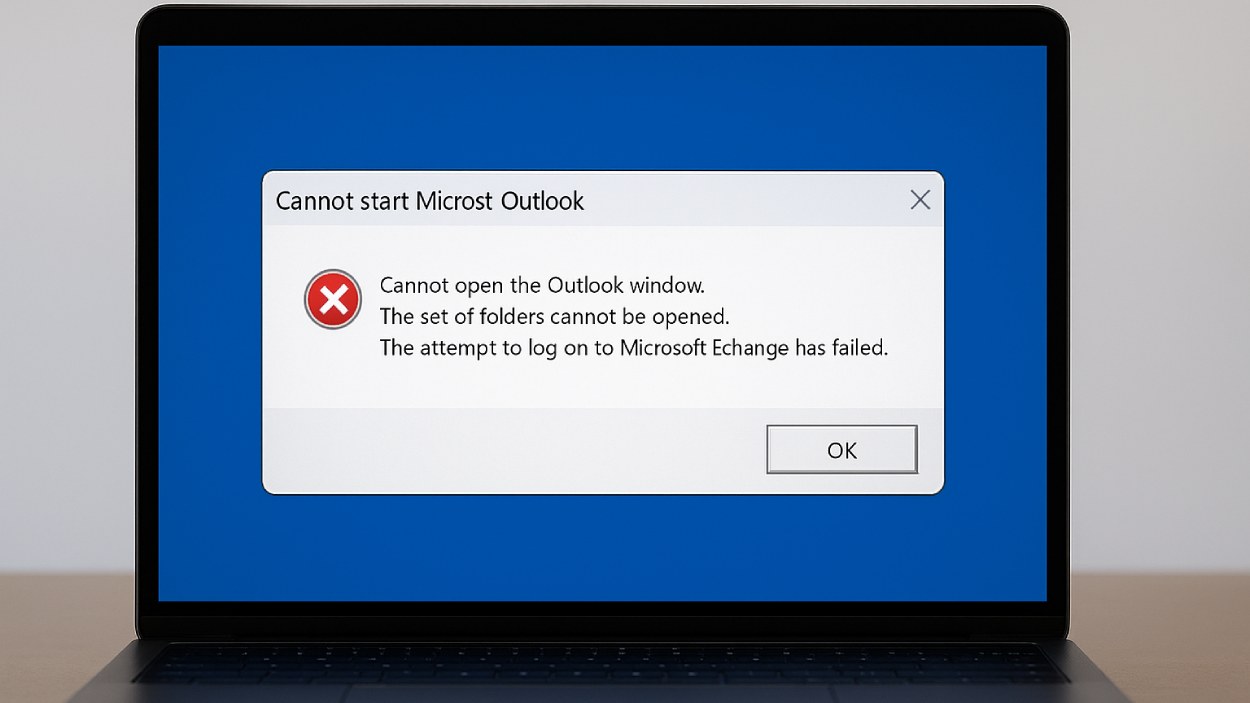A serious bug is crashing the classic Outlook app on Windows, and the only fix is through Microsoft’s official support.
Quick Summary – TLDR:
- Affected users see Outlook crash on launch with a login failure message
- The bug is tied to Exchange Online’s authentication concurrency limits
- Microsoft has not released a public fix; only support cases can trigger mitigation
- Web-based Outlook and the new Outlook app remain fully functional
What Happened?
Microsoft has confirmed a critical issue affecting the classic Outlook for Windows app, causing it to crash immediately upon launch. Users are unable to access their mailboxes, with the application throwing a generic error message related to failed login attempts. The root cause, as identified by Microsoft, appears tied to throttling limits within Exchange Online.
We have received reports of an issue impacting mailbox connectivity for Consumer and Commercial users. We have determined the cause of the issue to be a degraded subset of service infrastructure. We have rerouted traffic and we’re monitoring the service to ensure resolution.…
— Microsoft 365 Status (@MSFT365Status) October 1, 2025
Outlook Bug Disrupts Email Access for Windows Users
Organizations using the classic Outlook for Windows client are reporting widespread failures when attempting to launch the application. Affected users are greeted with the message:
“Cannot start Microsoft Outlook. Cannot open the Outlook window. The set of folders cannot be opened. The attempt to log on to Microsoft Exchange has failed.”
While the message is a common one in Outlook troubleshooting, this time the issue is different. Microsoft says the bug is not caused by local file corruption or user-side configuration problems. Instead, it stems from Exchange Online’s service-side limitations, specifically its authentication concurrency thresholds.
What’s Causing the Crash?
Microsoft engineers investigating recent support cases have pinpointed the culprit: a throttling rule in Exchange Online that kicks in when Outlook attempts too many concurrent authentications. This can happen more often in larger organizations or those using shared mailboxes, third-party tools, or migration services.
Technical traces reveal the following server response in Fiddler logs:
Microsoft.Exchange.RpcClientAccess.ServerTooBusyException: Client is being backed off
---> Microsoft.Exchange.RpcClientAccess.ClientBackoffException:
ErrorCode: ClientBackoff, LID: 49586 - Authentication concurrency limit is reached.
This throttling mechanism causes Outlook to be blocked from logging in, resulting in an instant crash with no recovery options for the user.
No Self-Service Fix Available
Unlike other Outlook startup issues, this bug cannot be fixed by users or IT admins alone. Typical troubleshooting steps like launching in Safe Mode, creating a new profile, or resetting navigation panes are ineffective.
Microsoft confirms:
“Currently, the only way to address this issue is to open a support case from the Microsoft 365 Admin portal. Exchange Online support will need to request a change from the service to mitigate.”
This means any affected organization must escalate the issue directly to Microsoft, where support engineers can temporarily adjust the concurrency limits for specific mailboxes.
Temporary Workarounds Are Available
To keep operations running, Microsoft recommends switching to other Outlook platforms that are not impacted by this bug, including:
- Outlook Web Access (OWA) through a browser.
- New Outlook for Windows, which uses different connection protocols.
Both options allow full access to mailboxes without triggering the Exchange throttle.
Action Items for IT Teams
Microsoft advises administrators to:
- Capture a Fiddler trace during a crash to confirm the error.
- Submit a support case via the Microsoft 365 Admin Center.
- Notify users to temporarily use OWA or the new Outlook app.
- Monitor the Microsoft 365 Message Center for updates.
The company has not provided a timeline for a permanent resolution.
SQ Magazine Takeaway
I’ll be honest, this is a frustrating bug for anyone relying on Outlook desktop. What’s worse is that the fix isn’t in your hands. You have to go through Microsoft support, wait for their backend team to step in, and hope it doesn’t happen again. If you’re managing a busy team or a large organization, switching everyone to the web or the new app might be your best move for now. It’s not ideal, but at least it keeps work moving.





























